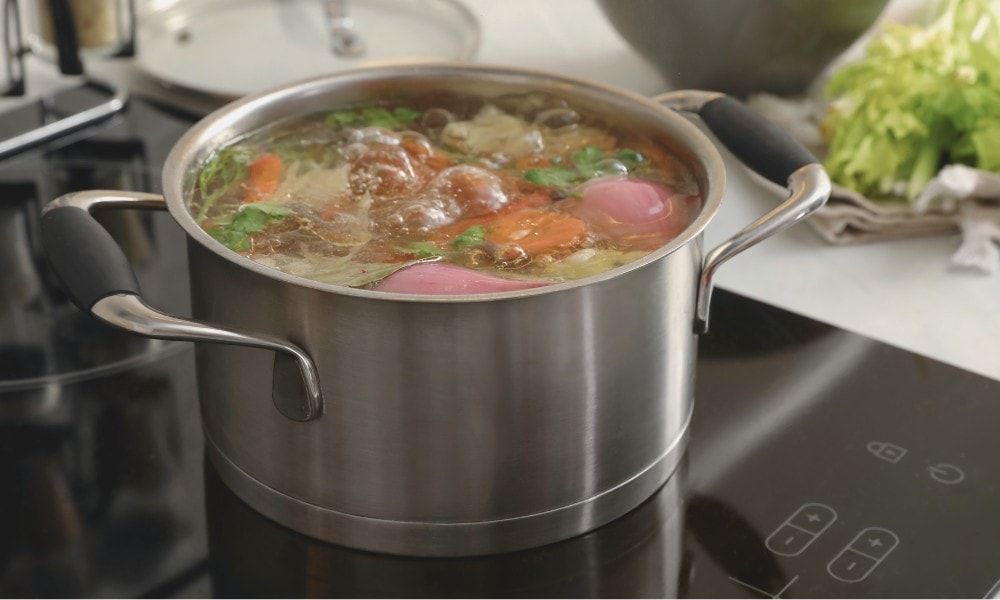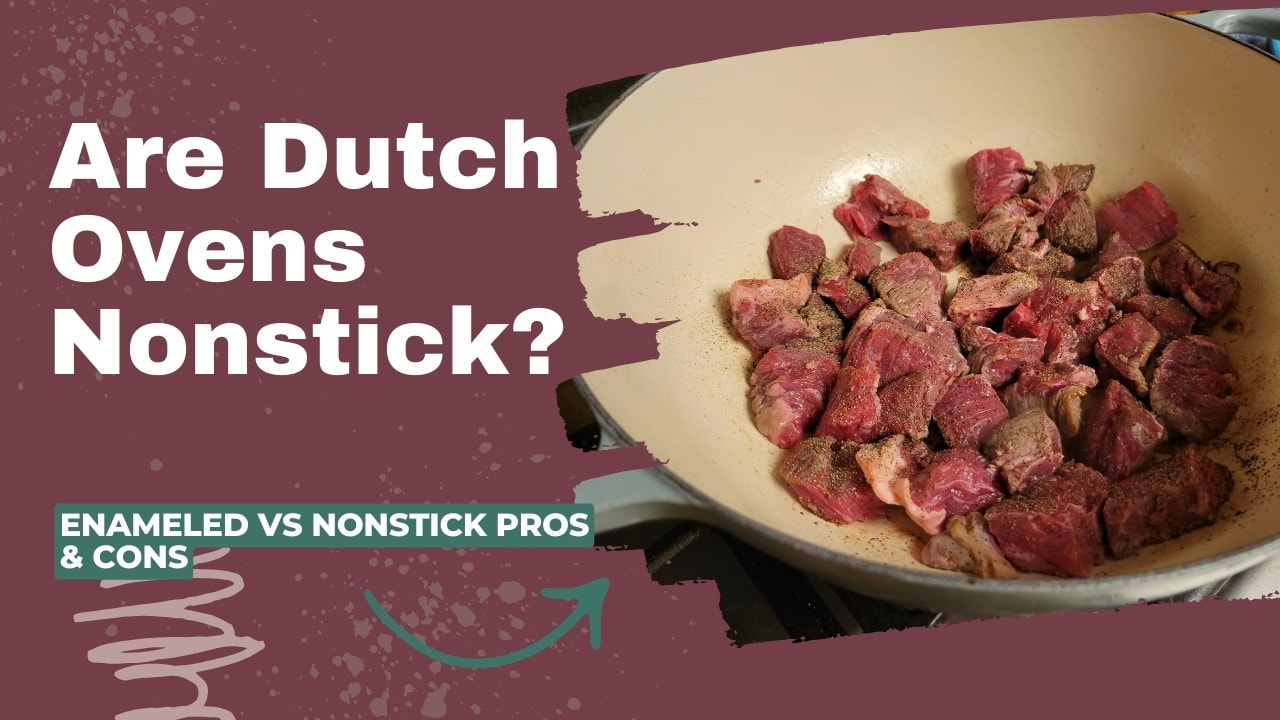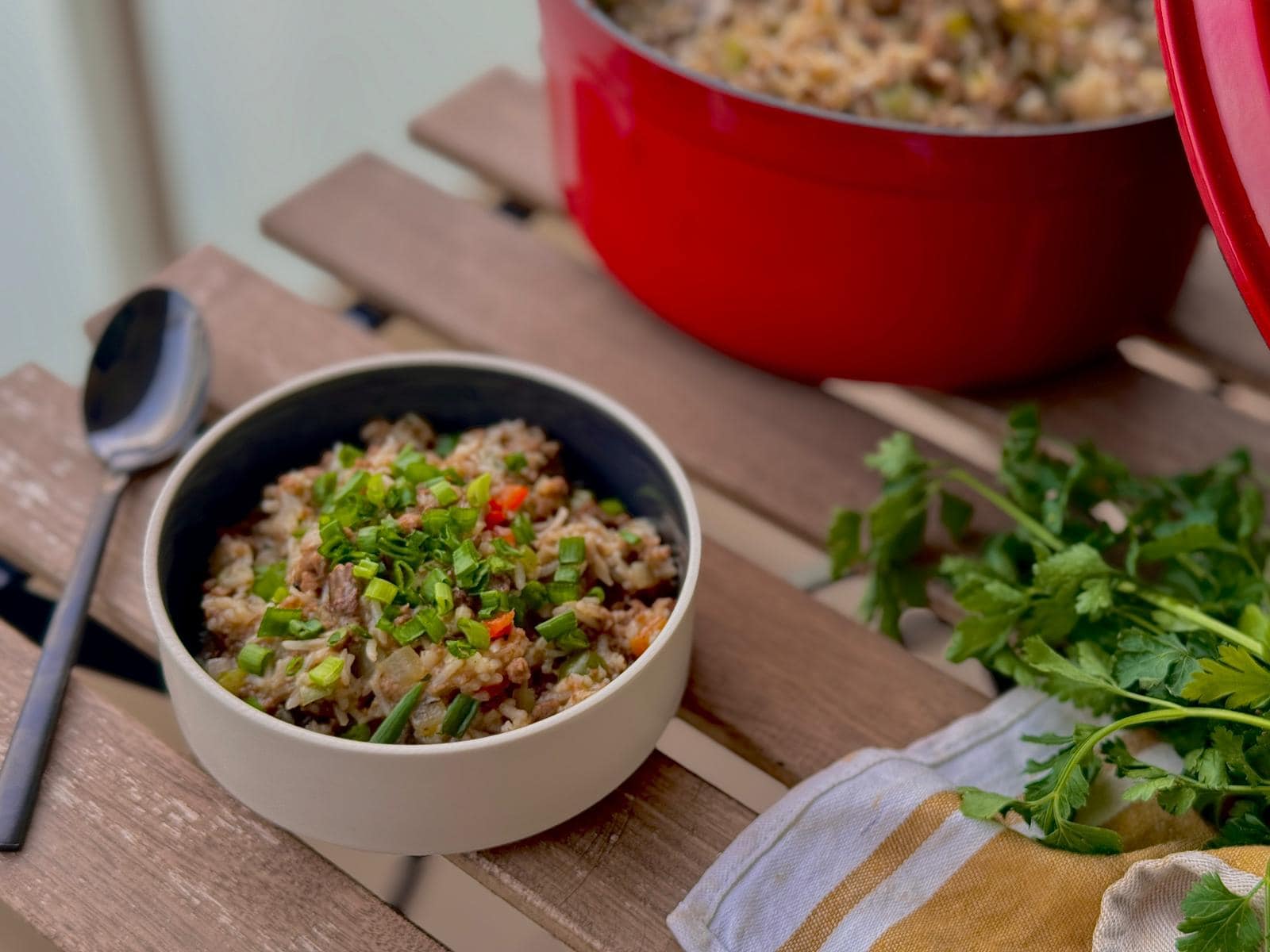I can’t live without my beloved cast iron Dutch oven. It’s the workhorse of my kitchen. No matter what I plan to cook, it never fails me — unless I’m going for some fish. For that, I always turn to my Teflon pan, which gives me an easy release.
But that begs the question – are Dutch ovens nonstick at all?
Are Dutch Ovens Nonstick?
Dutch ovens can be nonstick if they’re coated with Teflon or ceramic. Only these two materials offer 100% nonstick qualities. Enameled cast iron and seasoned cast iron are relatively nonstick if you heat them to the right temperature and use enough oil.
What are Dutch Ovens Coated In?
While cast iron and enameled cast iron are the first two materials that come to your mind when thinking of Dutch ovens, you can find Dutch ovens made of almost any material. There are some great nonstick, ceramic, and even stainless steel Dutch ovens out there.
Whether a Dutch oven is nonstick or not depends on its coating material. So, let’s take a look at these coating options.
Cast Iron
Cast iron has some fantastic features, including great heat retention. But its nonstick properties depend on how you season and use it.
Raw cast iron is highly porous. This means food particles and bits can get stuck into these pores and make the food stick to the cookware’s surface. That’s all the worse for delicate and sticky proteins like fish and eggs.

You can make cast iron beautifully nonstick through seasoning. Proper and regular seasoning gives you a virtually nonstick Dutch oven that lasts generations.
Enamel Cast Iron
Enamel is made of powdered glass fused onto cast iron’s surface to make it less reactive and more durable.
The enamel coating —if made by reputable brands like Le Creuset and Staub— is chip-resistant and can last a lifetime. It also gives the Dutch oven a glossy look. You’d expect this sleek surface to be 100% nonstick.

But enamel can make food stick if you don’t use the right cooking techniques. Le Creuset comes with a learning curve that requires the right amount of oil and preheating. But once you get the hang of things, you can get a semi-nonstick surface that’s easy to clean without needing seasoning.
Stainless Steel
Among the most common cookware materials, stainless steel is probably the most notorious for being sticky. The microscopic pores on its surface make stainless steel nonstick. And if you don’t get the temperature right, cooking with stainless steel can prove to be a big challenge.
Because they aren’t nonstick, stainless steel Dutch ovens are better for slow cooking and boiling than frying and searing.

That said, it doesn’t mean you can’t make your stainless steel Dutch oven nonstick. Heating it to the right temperature closes the microscopic pores and improves its nonstick qualities.
Do Dutch Ovens Have Teflon?
Did you know that you can buy nonstick-coated Dutch ovens? Seems like a huge advancement since Christopher Columbus brought the first Dutch oven to the US, right!?
Just look at this Caraway ceramic Dutch oven. It’s gorgeous, easy to use, and lightweight.
If you want 100% nonstick Dutch ovens, go for Teflon or ceramic.
All other materials can become semi-nonstick with tricks like seasoning and proper preheating. But Teflon and ceramic cookware are nonstick out of the box. You get an easy release without using too much oil or doing tests to ensure it’s reached the right temperature. The main downside to nonstick-coated Dutch ovens is that they can’t be used over high heat.
Nonstick vs Enameled Dutch Oven Pros and Cons
Nonstick Dutch Oven Pros
Nonstick Dutch Oven Cons
Enamel Dutch Oven Pros
Enamel Dutch Oven Cons
How Do You Keep Food from Sticking to a Dutch Oven?
Cooking in an enamel Dutch oven isn’t difficult. With a bit of trial and error, you can make it decently nonstick.
- Preheat the Dutch oven over low to medium heat for 2-3 minutes.
- Pour one to two tablespoons of oil.
- Wait a few seconds for the oil to heat.
- Add the meat or veggies and wait until they get brown.
- Flip things over and fry the other side.
Conclusion
Like any kind of pot or pan, you can find Dutch ovens with different coating materials. Teflon and ceramic are 100% nonstick out of the box. But you can make stainless steel, cast iron, and enamel semi-nonstick after heating, adding enough oil, or seasoning.
What’s your favorite Dutch oven material? Do you like its nonstick qualities? Please share your thoughts below.









